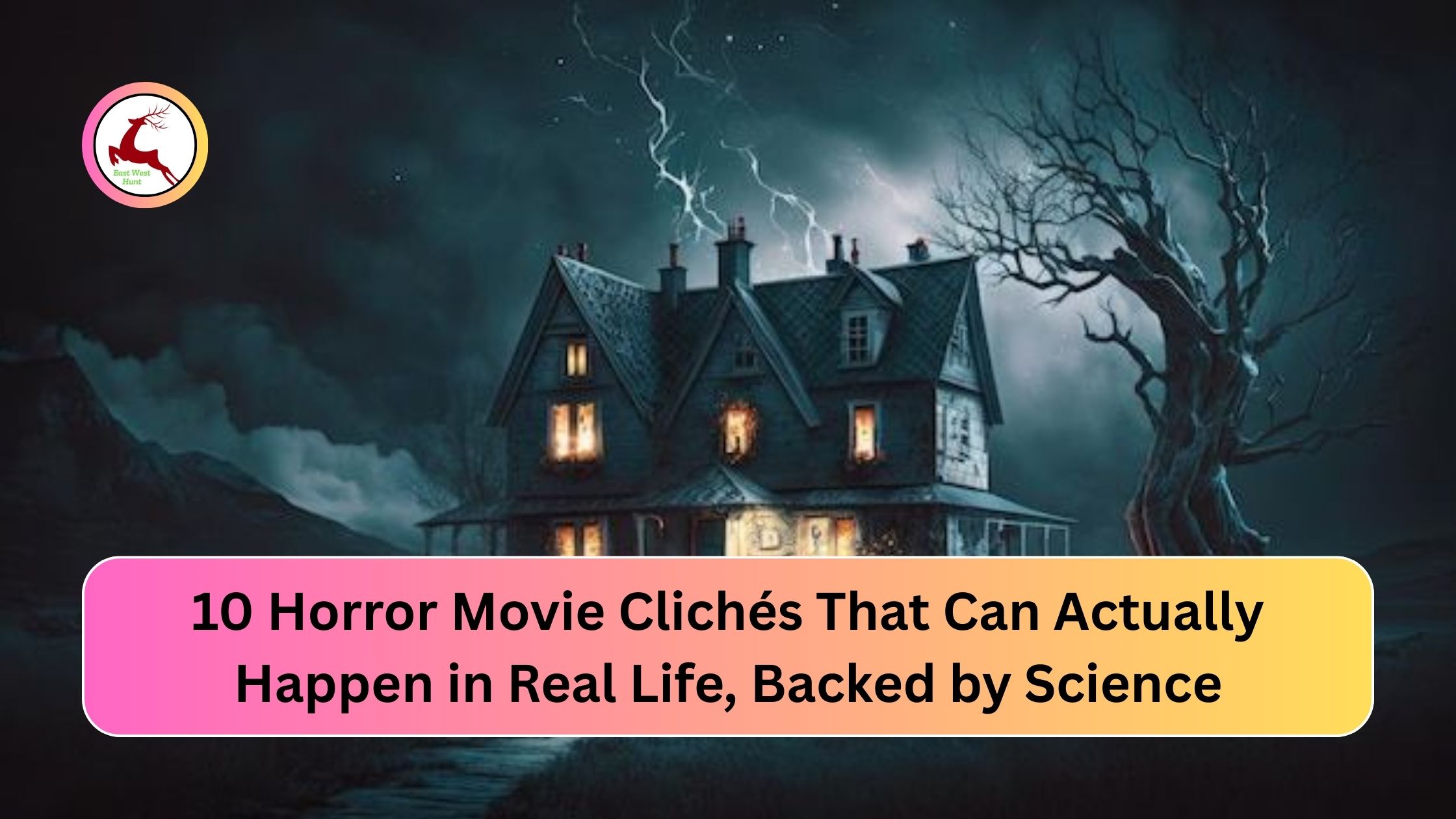Horror movies are packed with over-the-top moments that seem too unrealistic to happen in real life. From characters making bad decisions to eerie supernatural occurrences, these clichés make us roll our eyes. However, research suggests that some of these classic horror tropes aren’t as far-fetched as we think.
In reality, fear affects human behavior in surprising ways. The body reacts instinctively in high-stress situations, sometimes making people do exactly what horror movie characters do. Let’s take a closer look at ten horror movie clichés that can actually happen in real life.
1. Investigating a Strange Noise
We’ve all watched a horror movie where a character hears a loud noise and decides to check it out instead of running away. While this seems like a bad idea, it actually makes sense from a psychological perspective.
Psychologist Susan Albers, PsyD, explains that the brain is wired to investigate unknown sounds as a survival mechanism. This heightened awareness, called hypervigilance, helps detect potential threats. So, while it may seem foolish, investigating a strange noise is a natural human instinct.
2. Falling Down and Crawling Instead of Running
It’s frustrating to see horror movie characters trip and crawl instead of getting up and running. But this reaction has a scientific explanation.
When faced with extreme fear, the body’s fight-or-flight response kicks in. Some animals instinctively make themselves smaller to avoid detection. A study from The American Naturalist found that certain fish delay color changes to blend in and avoid predators. Similarly, humans may shrink or freeze instead of running when terrified.
3. Animals Staring at Nothing
In horror movies, animals often sense danger before humans do. They growl, hiss, or stare at nothing, making us wonder if they can see ghosts. While science doesn’t confirm the paranormal, it does suggest that animals have heightened senses.
Dr. Ellis Loew, a professor at Cornell University, explains that animals can see ultraviolet light, which is invisible to humans. This ability may explain why pets sometimes appear to react to things we can’t see.
4. Running Upstairs When Being Chased
Instead of running out the front door, horror movie characters often make the mistake of running upstairs. While this seems illogical, it happens in real life due to panic-driven decision-making.
Clinical therapist Brittney Chesworth, PhD, states that people look for immediate safety in stressful situations. Running upstairs might feel like a protective move, even though it can trap them instead.
5. Calling a Friend Instead of 911
When characters in horror movies sense danger, they often call a friend or partner instead of the police. Surprisingly, this mirrors real-life behavior.
A Gallup poll found that only 51% of Americans trust the police, leading many to seek help from loved ones first. In stressful situations, people tend to reach out to those they trust most, even when emergency services might be the better option.
6. Running in Circles When Lost
In horror movies, lost characters often end up running in circles. It turns out, this is a real psychological phenomenon.
According to therapist Tom Bunn, LCSW, anxiety impairs high-level thinking and decision-making. Fear can disorient people, making them run in random directions instead of following a clear path to safety.
7. Dropping Keys When Trying to Escape
A classic horror movie trope involves a character fumbling their keys at the worst possible moment. While it may seem exaggerated, research confirms that fear impacts motor skills.
According to StatPearls Publishing, anxiety can cause shaking, numbness, and loss of coordination. This explains why people often struggle with simple tasks when under extreme stress.
8. Helping a Random Stranger
In horror movies, characters often stop to help someone in distress, only to regret it later. In reality, people do tend to trust strangers more than they should.
A study published in The Social Science Journal found that individuals are more likely to trust strangers over close friends in certain situations. People make judgments based on appearances, meaning a stranger who seems harmless may gain their trust too easily.
9. Splitting Up Instead of Sticking Together
One of the most frustrating horror clichés is when a group splits up instead of staying together. While this seems foolish, social psychology explains why people go along with bad decisions.
NYU researchers studied “groupthink,” a phenomenon where individuals prioritize group harmony over logical thinking. Even if splitting up is a bad idea, people might agree to it just to avoid conflict.
10. Knocking Something Over While Hiding
Hiding from a threat only to accidentally make noise is another classic horror scene. In real life, heightened fear makes people more prone to mistakes.
According to research from The Journal of Anxiety Disorders, fear affects coordination and motor control. The increased adrenaline can make people jittery, leading them to knock things over when trying to stay quiet.
Conclusion
While horror movies often exaggerate reality, many of their tropes are grounded in psychology and human behavior. Fear alters our decision-making, causing people to react in ways that seem illogical but are actually instinctual. From investigating strange noises to fumbling with keys in a panic, these reactions are part of how our minds and bodies cope with fear.
